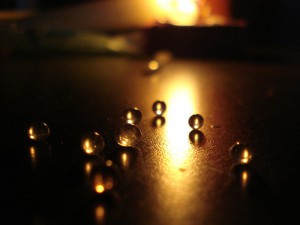Another Rieseberg lab member was asking me this week about preserving plant tissues on silica gel for later DNA extraction, and this got me to thinking about the general idea. I thought I would make a post about it, since it’s a useful technique, even in the genomic age. A lot of you already know all about this, so apologies for preaching to the choir.
I put an extensive post on my own Research Blog, but here is the gist of it:
Silica gel, which is used in the Rieseberg lab mostly to dry seeds, is such an effective drying agent, that I often recommend people to use it instead of trying to store tissues in a refrigerator for later DNA extraction. In short, if you can’t get the tissue from the field to the lab in less than a day, and you don’t have the opportunity to transport the tissue on dry ice or liquid nitrogen, then silica gel is your best bet. Otherwise, even when refrigerated, the plant’s own enzymes (DNase, RNase, etc) will destroy the DNA. Worse still, the natural endophytic fungi in the plant tissue will also begin to proliferate (including their DNA!).
I have also noticed that some silica-dried tissues yield better DNA than fresh ones. This may be because the dried tissues contain less active enzymes. A fresh tissue will contain a lot of functional enzymes capable of degrading DNA, which will begin to eat up the DNA as soon as the tissue is harvested. Dried samples also yield DNA with much less RNA contamination, presumably because the RNA has been degraded during the drying process. Finally, most dried tissue yields DNA that is minimally degraded (high molecular weight), meaning that it will work for any genomic application, even whole genome sequencing.
Finally, I would propose that silica dried samples are the best for shipping, assuming that the end use is DNA extraction. Dried tissues are usually not an issue for customs (for example, when sending samples from the USA to Canada), while fresh or frozen tissues usually are. Plus, you can ship a dried tissue very cheaply, because you don’t need to add ice. I’ve sent samples to people by simply dropping silica dried leaves in a standard letter-sized envelope and writing the address on the front. No problem!


I would also recommend the bead kind with indicator crystals. Sure, sometimes it’s a little messy when the little guys spill, but overall, ease of pouring and not clogging up ziploc mechanisms make the beads the best way to go.
Best brands:
Dri Splendor, available at some US craft stores but not all
VeriTemp, because you can buy mass quantities at once.
Here’s some more on silica gel how-to: http://plantarum.ca/botany/silica/